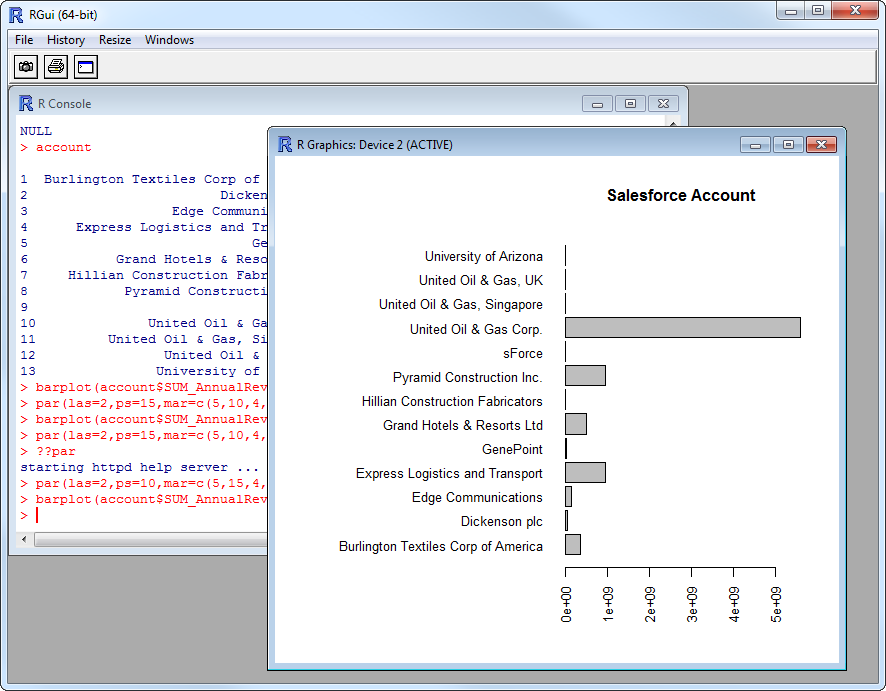Discover how a bimodal integration strategy can address the major data management challenges facing your organization today.
Get the Report →Analyze Adobe Commerce Data in R
Use standard R functions and the development environment of your choice to analyze Adobe Commerce data with the CData JDBC Driver for Adobe Commerce.
Access Adobe Commerce data with pure R script and standard SQL on any machine where R and Java can be installed. You can use the CData JDBC Driver for Adobe Commerce and the RJDBC package to work with remote Adobe Commerce data in R. By using the CData Driver, you are leveraging a driver written for industry-proven standards to access your data in the popular, open-source R language. This article shows how to use the driver to execute SQL queries to Adobe Commerce and visualize Adobe Commerce data by calling standard R functions.
Install R
You can match the driver's performance gains from multi-threading and managed code by running the multithreaded Microsoft R Open or by running open R linked with the BLAS/LAPACK libraries. This article uses Microsoft R Open 3.2.3, which is preconfigured to install packages from the Jan. 1, 2016 snapshot of the CRAN repository. This snapshot ensures reproducibility.
Load the RJDBC Package
To use the driver, download the RJDBC package. After installing the RJDBC package, the following line loads the package:
library(RJDBC)
Connect to Adobe Commerce as a JDBC Data Source
You will need the following information to connect to Adobe Commerce as a JDBC data source:
- Driver Class: Set this to cdata.jdbc.adobe commerce.Adobe CommerceDriver
- Classpath: Set this to the location of the driver JAR. By default this is the lib subfolder of the installation folder.
The DBI functions, such as dbConnect and dbSendQuery, provide a unified interface for writing data access code in R. Use the following line to initialize a DBI driver that can make JDBC requests to the CData JDBC Driver for Adobe Commerce:
driver <- JDBC(driverClass = "cdata.jdbc.adobe commerce.Adobe CommerceDriver", classPath = "MyInstallationDir\lib\cdata.jdbc.adobe commerce.jar", identifier.quote = "'")
You can now use DBI functions to connect to Adobe Commerce and execute SQL queries. Initialize the JDBC connection with the dbConnect function.
Adobe Commerce uses the OAuth 1 authentication standard. To connect to the Adobe Commerce REST API, you will need to obtain values for the OAuthClientId, OAuthClientSecret, and CallbackURL connection properties by registering an app with your Adobe Commerce system. See the "Getting Started" section in the help documentation for a guide to obtaining the OAuth values and connecting.
You will also need to provide the URL to your Adobe Commerce system. The URL depends on whether you are using the Adobe Commerce REST API as a customer or administrator.
Customer: To use Adobe Commerce as a customer, make sure you have created a customer account in the Adobe Commerce homepage. To do so, click Account -> Register. You can then set the URL connection property to the endpoint of your Adobe Commerce system.
Administrator: To access Adobe Commerce as an administrator, set CustomAdminPath instead. This value can be obtained in the Advanced settings in the Admin menu, which can be accessed by selecting System -> Configuration -> Advanced -> Admin -> Admin Base URL.
If the Use Custom Admin Path setting on this page is set to YES, the value is inside the Custom Admin Path text box; otherwise, set the CustomAdminPath connection property to the default value, which is "admin".
Built-in Connection String Designer
For assistance in constructing the JDBC URL, use the connection string designer built into the Adobe Commerce JDBC Driver. Either double-click the JAR file or execute the jar file from the command-line.
java -jar cdata.jdbc.adobe commerce.jar
Fill in the connection properties and copy the connection string to the clipboard.

Below is a sample dbConnect call, including a typical JDBC connection string:
conn <- dbConnect(driver,"jdbc:adobe commerce:OAuthClientId=MyConsumerKey;OAuthClientSecret=MyConsumerSecret;CallbackURL=http://127.0.0.1:33333;Url=https://myAdobe Commercehost.com;InitiateOAuth=GETANDREFRESH")
Schema Discovery
The driver models Adobe Commerce APIs as relational tables, views, and stored procedures. Use the following line to retrieve the list of tables:
dbListTables(conn)
Execute SQL Queries
You can use the dbGetQuery function to execute any SQL query supported by the Adobe Commerce API:
products <- dbGetQuery(conn,"SELECT Name, Price FROM Products")
You can view the results in a data viewer window with the following command:
View(products)
Plot Adobe Commerce Data
You can now analyze Adobe Commerce data with any of the data visualization packages available in the CRAN repository. You can create simple bar plots with the built-in bar plot function:
par(las=2,ps=10,mar=c(5,15,4,2))
barplot(products$Price, main="Adobe Commerce Products", names.arg = products$Name, horiz=TRUE)







